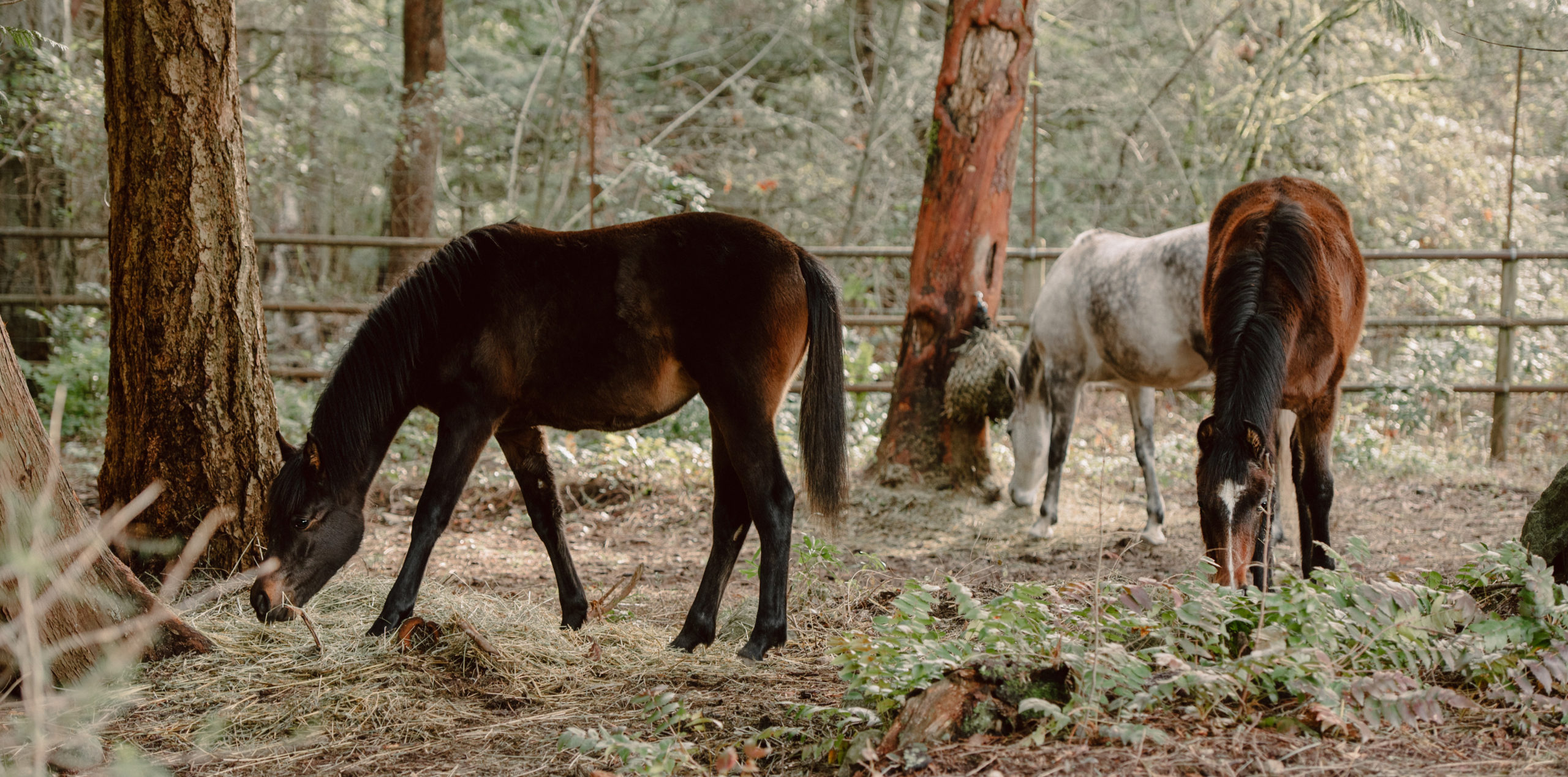by Cassidy Nunn | photos by Nunn Other Photography –
“Humans and horses have had a connection for thousands of years because of this connection we are where we are today,” says Ann Martins, a dedicated horsewoman who’s spent most of her life working with and observing these remarkable animals in all sorts of living situations. Since May 2021 Ann has called Island Arabians her home; she was brought on to manage and caretake the horses living on the 40-acre North Saanich property. The farm’s owners, Don and Ruth James, have been breeding and raising champion Arabian horses for the past 25 years.
Over the years, Ann had begun to notice in the horses she’d looked after that the amount of medical, hoof, and feeding issues were appearing to increase. “We have to understand the species again. How does their digestive system work? What do they really need?” she says. “We’re so out of touch with nature and I think that’s what our horses were missing too.” So when Ann joined the team at Island Arabians, she began to make some lifestyle changes for the six horses who call the farm home. She and the Jameses understood the need for horses to move during the day, as they would in the wild, rather than standing around statically, and how essential that is to their physical and mental health. She’d been researching and learning more about track systems, and in August 2022 construction began on one for the property. A track system is “really a new-old idea,” says Ann. “Tracks have been around for a very long time and in England they have continued to exist along with more traditional well-known ways of keeping horses in pastures or barns. In fact, horses in the wild make their own tracks, as do horses that live in unmanaged environments.”
The track on the James’ property circles a large, fenced grazing field with a low calorie, high fibre grass. Many of the grass fields horses graze on these days are rich grass varieties, which can lead to metabolic issues and other health concerns whereas in the wild, horses tend to consume coarser, lower-calorie forage. The grazing area has two gates so the horses can move in and out freely and not feel as though they’re penned in at any point, or it can be closed off completely to grazing if needed. The track is a large, oval shape, so there are no corners for the horses to get trapped in. A sizable sand pit for the horses to roll or sleep in sits below a swath of spaghetti hog, which is slightly softer than regular hog fuel, and offers the horses a comfortable surface for standing and lying down. Screenings make up the walking surface around the field and a large stretch of forest allows the horses to seek shelter under the trees and forage more naturally. Ann has several hay nets distributed throughout the track and forest area, which encourages the horses to move around to eat rather than standing sedentary. “Horses were designed to move and forage for most of their day; this provided the right conditions to keep the skeletal system aligned and the digestive system functioning properly and their hooves healthy,” she says.
Having this track has allowed the horses to live more naturally as a herd. To do so, Ann stresses that you need enough space for the horses to sort out their natural order without stressing them in a confined space. “It does take time to integrate them. It can be done; you just need timing and to know the horses,” she adds.
Since the track has been in place and the horses are living as a herd most of the time, Ann has noticed several positive changes. “They’re way calmer. They act instead of react.” Their hooves have all improved from the increase in movement over varied surfaces as has their overall health.
Ann recognizes that many horse owners may not have enough land to build full track systems, but she encourages owners to “rethink the use and layout of the land,” that they have. Small changes can be made by “adding more choices to the equine’s daily lifestyle, such as in and out paddocks, a buddy during the day a walk in an arena with another horse.” She also suggests, when possible, to build small herds if the setting and horses are suitable, to build track systems along the perimeters of existing pasture land, and to offer more feeding stations to promote movement. “The steps to improving a horse’s lifestyle are endless, and each step, no matter how small, counts.”
For resources on building track systems, two good options are Horse Track Systems by Amy Dell and Paddock Paradise by Jamie Jackson, or the Facebook group Horse Track System.





